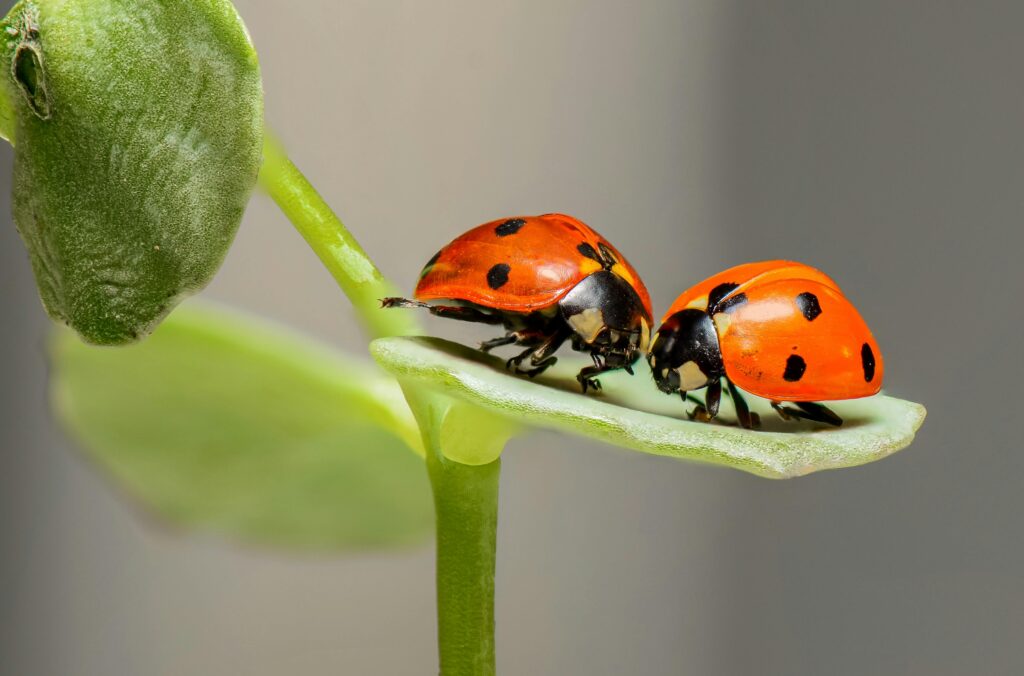Welcome to the Storytime at Home series! Every other week, we share a list of book options tied to a kid-approved theme, a craft you can set up to go along with the theme, songs/rhymes you can do during storytime, and additional enrichment activities. All books are available at Richmond Public Library, and crafts will involve items you likely have at home already! Our hope is that we can make it easy for you to share stories with your little ones and create a little bit of library magic at home.
P.S. Love library storytimes? Take a look at all in-library storytime options here. There is a storytime for your child every morning at our various branches!
Okay, now to the fun stuff…
Today’s storytime theme is BUGS!

Exploring the world of bugs is a quintessential part of childhood. From our favorite nursery rhymes – hi, Itsy Bitsy! – to classic books like The Very Hungry Caterpillar, children learn about bugs early and surprisingly often. This topic is a great one for learning and development. There’s motor movement in the songs we sing, opportunities to discuss colors, shapes, numbers, and more while reading story about bugs, and a great excuse to get outside and find some bugs of your own. The library has many wonderful books about bugs, and we’ve included some of our favorites below. When you visit, you can also search ‘bug’ in our catalog, or ask a librarian to help you find the perfect one for you and your child.
Books
Reading to your kiddos turns them into confident thinkers. Making books a regular part of your daily routine is a great way to build children’s love of reading and learning. Storytimes also help build excitement around reading to support their literacy development.
Here are a few book options you can choose from for your bug-themed storytime.
Preschool
- Ugh! A Bug by Mary Bono
- Big Bug by Henry Cole
- Some Bugs by Angela DiTerlizzi
- Bug On The Rug by Sophia Gholz
- Itsy Bitsy, The Smart Spider by Charise Mericle Harper
- Hank’s Big Day: The Story of a Bug by Evan Kuhlman
- A Spider Named Itsy by Steve Light
- Buggy Bug by Christopher Raschka
- The Bugliest Bug by Carol Diggory Shields
- Ladybug Girl and the Bug Squad by David Soman
- Bugs Galore by Peter Stein
- Can You Make A Scary Face by Jan Thomas
- A Way With Wild Things by Larissa Theule
- Dot & Jabber and the Big Bug Mystery by Ellen Stoll Walsh














Toddler/Baby
- The Very Hungry Caterpillar by Eric Carle
- I Love Bugs by Emma Dodd
- What Do You Want, Little Friend? By Marianne Dubuc
- The Eensy-Weensy Spider by Mary Ann Hoberman
- Backyard Bugs by Jill MacDonald
- I Love Bugs by Philemon Sturges
- One Little Bug by Paola Van Turennout







There are many ways to make reading fun and engaging for your little one! Click the arrow below to see some of our favorite tips for bringing stories to life at home.
Click here to see some of our favorite reading tips
- Point at the pictures and ask your child what they see. Help build their vocabulary by pointing to pictures and saying the word aloud.
- Ask your child questions about the story: What do you think will happen next? How do you think this character is feeling? This character is going to the park; do you remember when we went to the park?
- Read with expression and enthusiasm, and use different voices for different characters.
- Act out what’s happening in the story. For example, if you’re reading about creepy-crawly bugs, act out crawling with your hands.
- As your child gets older, count objects in a book, discuss the different colors they see, point out shapes in the story, etc.
- Snuggle up and be patient. Reading is great bonding time for you and your child. Take your time walking them through the story. If your child wants to turn the page or be finished with reading, that’s OK too. You don’t have to read every word or even every page for reading with your little one to be beneficial for their development.
Songs and Rhymes
We love adding songs and rhymes to our storytimes. This is a great way to practice language with your child and support their physical (motor) development through movement.
Here are two songs and rhymes you can use for this themed storytime.
Sing: The Fuzzy Little Caterpillar
Tune: Itsy Bitsy Spider
Do the motions in italics as you’re singing
The fuzzy little caterpillar curled up on her leaf (hold one finger up for the caterpillar, curl it and lay it on your other palm)
Spun her little chrysalis and then fell fast asleep (roll your hands over each other and then place hands together and put them on your cheek, as sleeping)
While she was dreaming, she dreamed that she could fly (flap arms like you’re flying)
And later when she woke up, she was a butterfly (make a butterfly with your hands by having your palms face you and hooking thumbs; flutter your hands like wings!)
Movement Rhyme: Bumblebee, Bumblebee
(point to body parts as you say them)
Bumblebee, bumblebee, landing on my nose
Bumblebee, bumblebee, now he’s on my toes
On my arms, on my legs, on my elbows!
Bumblebee, bumblebee, he lands and then he goes! Buzzzzzzz!
Arts and Crafts
Adding a craft along with a book is a great way to continue allowing your child to learn, explore, and grow. Crafts are a nice supplement as they encourage motor development, creativity, self-confidence, and more.
In fact, art and craft activities:
- Build fine motor skills. Actions such as painting, coloring, gluing, and cutting develop small muscles in small hands and improve coordination skills as children learn to use both hands at the same time.
- Support early literacy. When children make art, they learn vocabulary and how to follow directions when getting verbal instructions from parents and caregivers. They also boost their communication skills via talking about their work!
- Teach early math concepts. Math skills are used frequently in arts and crafts. Kids learn about and recognize different shapes, count and sort art supplies, and even measure out materials.
- Encourage creativity. Art helps develop creativity, self-expression, problem-solving, and curiosity.
- Boost self-esteem. Doing arts and crafts can give children a sense of achievement and allow them to take pride in their work, which builds confidence.
- Offer bonding time. Kids love spending quality time with parents and caregivers, and arts and crafts are a great opportunity for this.
Here is a craft activity you can do along with the bug theme.
Rocking Handprint Bee Craft


Materials Needed
- Paper plate
- White cardstock
- Yellow and black paint (or markers)
- Glue
- Scissors
- Optional: Googly eyes
Source: The Craft Train
Directions
- Have your child paint or color the paper plate yellow. Then, add black stripes once dry.
- Fold the paper plate in half.
- While folded, round the right end of the plate with scissors to create the head of the bee.
- The left side can be trimmed into a point for the stinger. Be sure to leave the bottom of the plate rounded so that it rocks when you’re done!
- Trace your child’s hands on the cardstock (or another paper plate could work too).
- Cut them out and glue them on the top of the bee for the wings.
- Have your child add googly eyes or draw eyes onto their bee.
Additional Enrichment Ideas
The fun doesn’t have to end at books, songs, and a craft. There are many ways to enrich a storytime with additional activities and lessons. Here are a few ideas for you and your child:
- Visit the new Bug Squad exhibit at the Children’s Museum of Richmond that features talking animatronic members of the Bug Squad, bugs with their own superhero storyline that describes their super abilities and traits. The exhibit is a full sensory experience while providing plenty of active spaces to play. Open May 14 through August 25, 2024.
- Go on a bug hunt in your backyard or neighborhood. Discuss the bugs you see, their colors, their shape, their body parts (do they have wings? lots of legs?).
- Make bugs out of playdough. If you have plastic bugs at home, you can also push them into the playdough to make bug “fossils.”
- Create a bug-themed sensory bin with green rice or noodles, rocks, flowers, bugs, scoops, jars, magnifying glasses, etc.
- Print out this bug clip art to have an indoor bug hunt, complete a bug matching activity, etc.
- Paint rocks to look like bugs.
- Make bug hotels with plastic bottles and nature items collected in your own backyard.
- Head to the internet for more bug-inspired craft and activity options. There are so many to choose from. Here is one we like!
- Enjoy a yummy bug-themed snack with your kiddo!

We share these Storytime at Home posts twice a month, so be sure to check back soon for more. You can also search “#storytimeathome” to see all past posts.
Have a suggestion for the next theme we cover? Email Sarah at sarah.fenninger@rva.gov and let us know!
